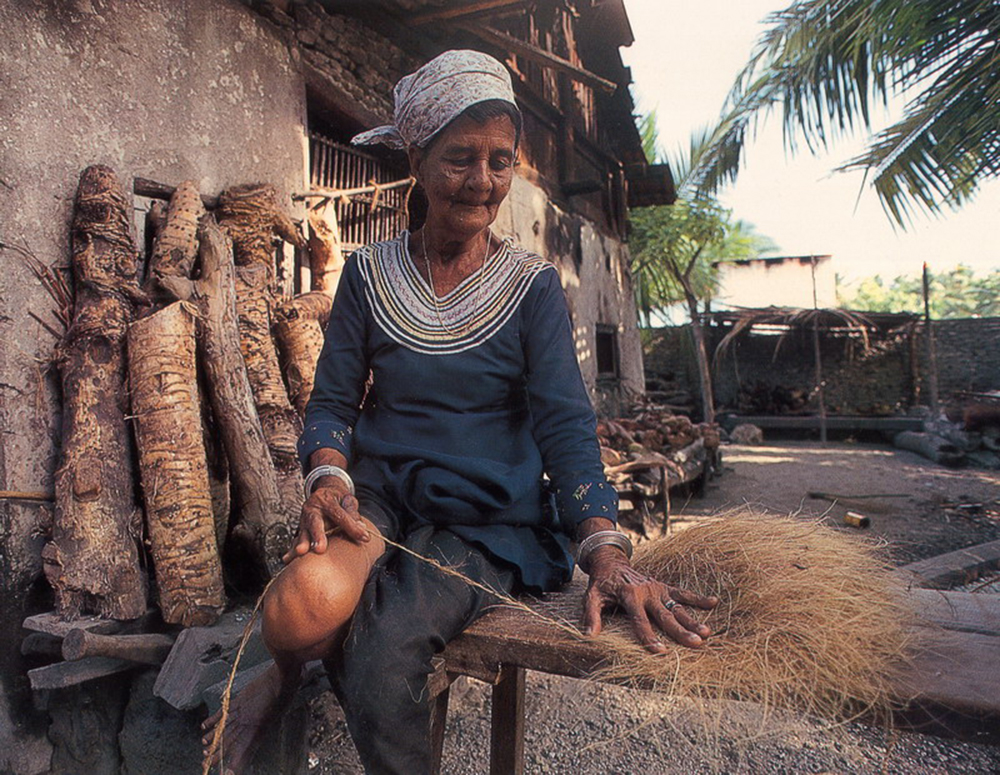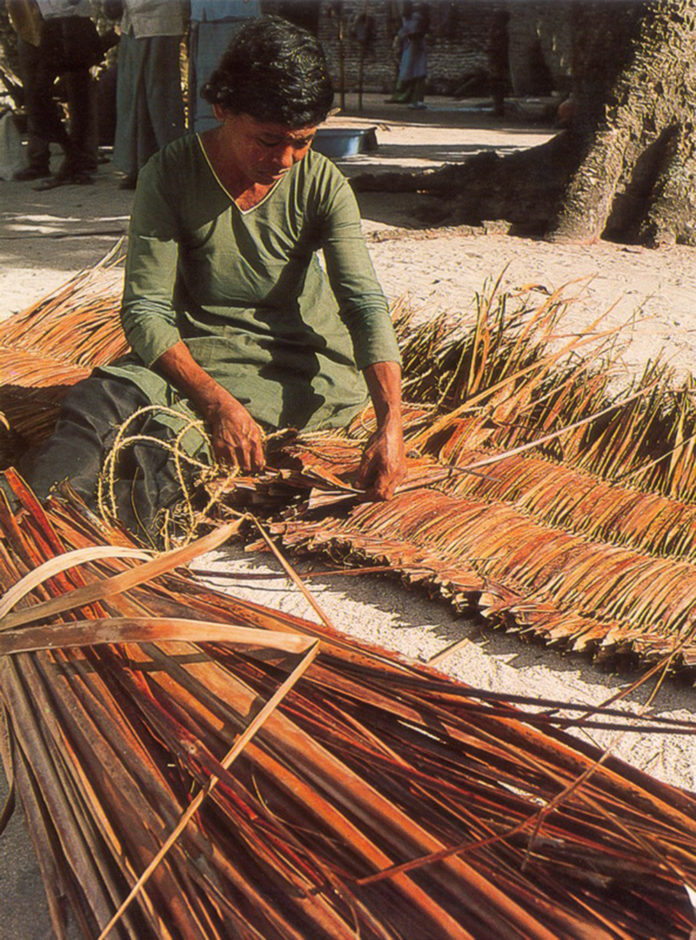Before the introduction of import and export, Maldivian people led a self-sufficient lifestyle and the coconut tree was a major part of the local livelihood.
Fangi is made from coconut palm fronds that dry out and drop off. Thatching, the art of making fangi, is locally known as fangi vinun. Although nowadays fangi is mostly used by various resorts in the country for stylistic reasons, traditionally it was used for roofing and as wall covers. Women collect fallen palm fronds and weave those using large 6 to 8 inch needles made from strong wood. The thread used for making fangi is foanu, another item made from the coconut tree.

Roanu is the local name for coir rope. To make the rope, first coconut husks are buried at the beach so that the waves would soak them. They are left to soak for around a month. Then, the husks are dug out and hammered with a wooden club to separate the fibre. The fibre is then washed with saltwater and sun-dried. And to make roanu, the fibre is spun in between the hands. Mats and other items made from roanu can be bought from souvenir shops. Roanu is made all over the country, but Kulhudhuffushi in Haa Dhaalu Atoll is famous for making it.
Raa bandhi is a container traditionally used for collecting toddy. It is made from polished coconut shells which are tied using roanu. Although toddy is rarely collected nowadays, visitors can still see raa bandhi at souvenir shops. In addition to the traditional toddy collecting device, polished coconut shells were also used to make various utensils such as spoons in the past. Now, polished and carved coconut shells are used to make ornamental souvenirs.
The woody skeleton of the palm frond called fan-thoshi is used to weave baskets and baiypolhi, local rice winnowing trays. Eakle brooms are also made from the spine of the frond.






[…] crafts include liyelaa jehun (lacquer work), mat weaving, boat building, coir-rope making, and fangi vinun […]